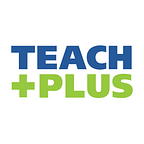Is Kindergarten Ready for Our Children?
By Erin Jackle
Rishi, an only child who has only occasional opportunities to interact with other children, knows all of his letters and letter sounds. He can count to 20 and write his first and last name. Rishi did not attend preschool, but his mom worked hard to make sure that he was ready for Kindergarten.
Jacob recognizes the letters in his name and can count to 10. He is able to write his first name, though sometimes the letters are out of order. Jacob has been attending a local daycare for the past couple of years and has daily opportunities to interact with other children. Jacob’s mom is concerned that he doesn’t know enough letters for Kindergarten.
“Is my child ready for kindergarten?” Like Rishi and Jacob’s parents, this question is on the minds of many parents of young children. After all, Kindergarten is often viewed as a child’s first step into the world, and readiness for Kindergarten has become synonymous with readiness for life. But what does it mean to be ready for Kindergarten? Children enter Kindergarten with a wide range of skills and experiences. In a single classroom, a Kindergarten teacher may have a child who is already reading and a child who does not know what letters are. Some of the children have years of school while others are away from their parents for the first time. Instead of asking if our children are ready for Kindergarten, maybe we should be asking if every Kindergarten classroom is ready for them.
I believe that the critical element that makes a Kindergarten classroom ready for all children is play. In trying to be competitive in a global society, we have begun to introduce academic content into earlier and earlier grades and are asking children to do things for which their brains and bodies aren’t ready. Play is the key to unlocking learning. In a play-based Kindergarten, the classroom is a bustle of activity. Some of the students are writing letters in shaving cream at a table. Across the room, the block area has been transformed into a construction zone, where skyscrapers are rising rapidly and sometimes falling. In the dramatic play center, students have set up a vet’s and a stuffed snake is in dire need of surgery for his broken tail. The teacher is circling the classroom, stopping to mediate a conflict over when buildings should be knocked down, asking questions about how to care for a sick dog, and jotting down her observations of students and their learning.
Without play, things look very different. The hands-on centers are missing. There are no blocks, no play kitchen, and no shaving cream. The students sit at a table with a worksheet and a pencil. The teacher stands at the front giving a math lesson, talking the class through each section of the worksheet. A handful of students are following along, but there are two kids kicking each other under the table, one student is drawing pictures on the back of the worksheet, and another who has been in the bathroom for the entire math lesson. At the end of the lesson, the teacher collects the worksheets to grade.
I have been in both of these Kindergarten classrooms and have seen everything in between. I have found that in classrooms that are hands-on, engaging, and include a healthy balance of child-led play and teacher-directed activities, most students are ready to learn. In classrooms that rely on more whole group instruction, worksheets, and academic content, even the most “prepared” students who can count to 20 and know all of the letters in their name struggle. In the play-based classroom, both Rishi and Jacob would have the opportunity to build on their strengths and develop new skills.
It’s time for us to bring play back to all Kindergarten classrooms. While the term “play-based” make some parents and educators nervous, it is not a free for all. Instead, in a play-based classroom the teacher carefully designs play opportunities that meet each child’s learning needs. As Fred Rogers said, “Play is often talked about as if it were a relief from serious learning. But for children play is learning. Play really is the work of childhood.” By adding play back into our Kindergartens, our classrooms will be ready to meet the wide variety of abilities and experiences of each child entering Kindergarten. All of our children will be ready for Kindergarten because all Kindergarten will be ready for all of our children.
Erin Jackle is the transition facilitator for early learners for School District U-46 in Elgin, Illinois. She is a 2018–2019 Teach Plus Illinois Early Childhood Educator Fellow.
